[javascript protected email address]
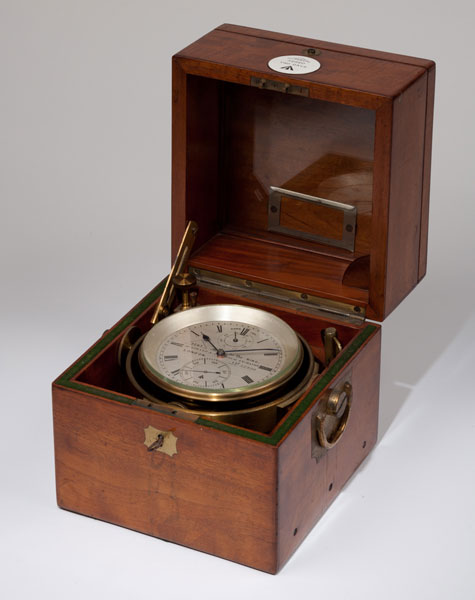
E. Dent & Co., London No. 52920

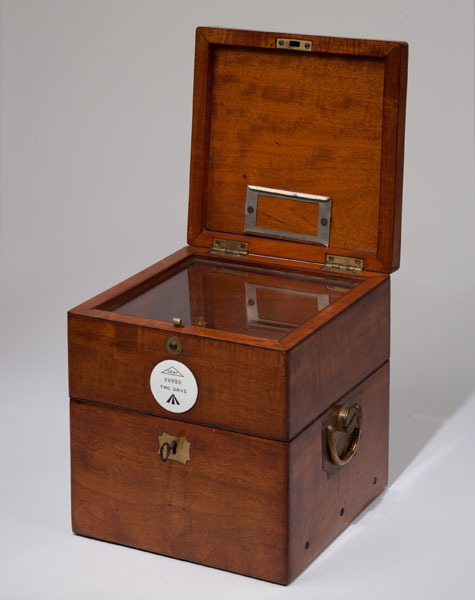
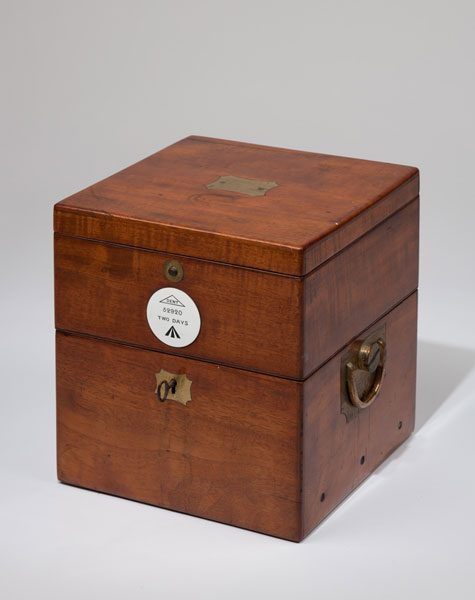
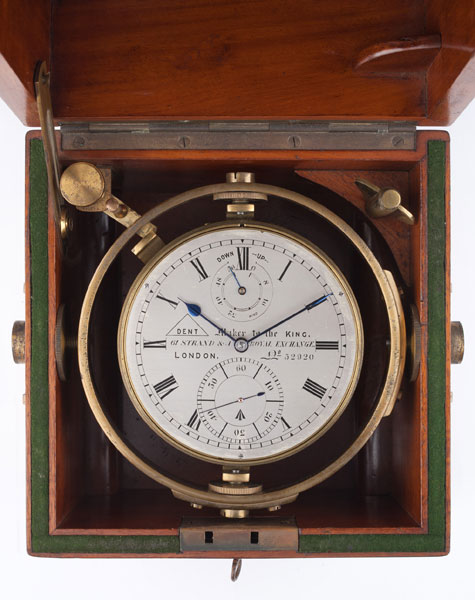
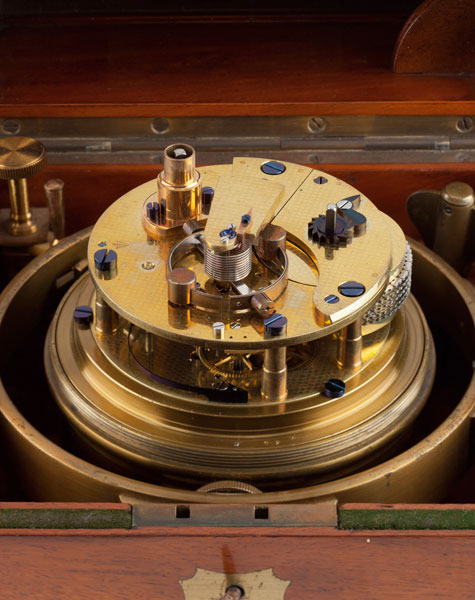
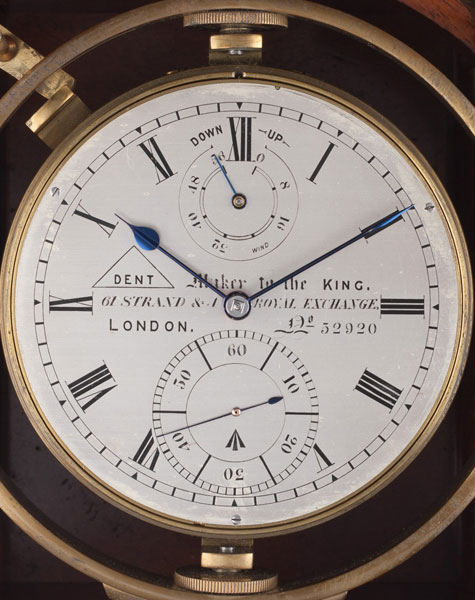
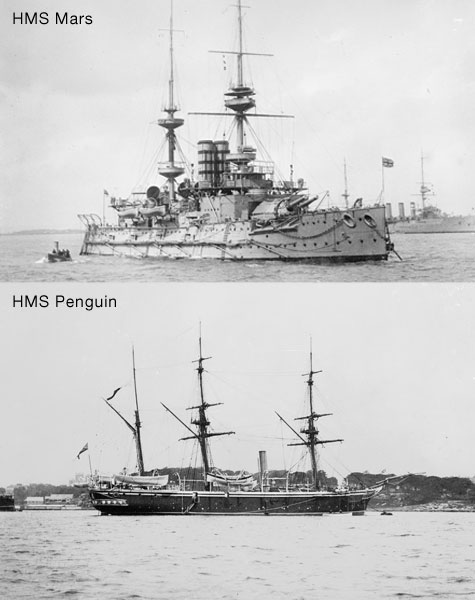
Circa 1904
Sold
184mm. square box
A very fine and historically interesting Royal Observatory Kew certificate two-day marine chronometer. DIAL The 102mm. silvered engraved brass dial has Roman chapters with outer minute track, blued steel spade hands. The centre is signed DENT (within Trademark triangle) Maker to the King, 61 STRAND & ROYAL EXCHANGE, LONDON No. 52920 with up-and-down sector at XII calibrated 0-56, seconds ring at VI engraved with Broad Arrow, both with blued steel hands MOVEMENT The full-plate movement is has spotted plates, the top plate engraved with Broad Arrow, chain fusee and spring barrel, the escapement with cut bimetallic balance with circular heat compensation weights, steel helical balance spring and Earnshaw-type spring detent escapement. BOX Brass bowl punch-numbered 920 to the inside with spring-loaded winding cover to the underside which is further stamped H.S. 1 together with the Broad Arrow, gimbal and locking arm, original tipsy winding key, baize-lined interior edge, fine quality three-tier mahogany box with enamel plaque to the centre section signed DENT (within Trademark triangle) 52920 TWO DAYS + BROAD ARROW, vacant brass cartouche in the top lid, brass drop handles to the sides. KEW ‘A’ CERTIFICATE Dent 52920 was entered into the 1902/3 and was awarded a class A certificate in April 1903. H.M.S. PENGUIN 52920’s first duty was aboard H.M.S. Penguin, an Osprey class sloop, built for the Royal Navy by Robert Napier & Son, at the Govan shipyard in Hull. Penguin was launched in 1876 and commissioned in 1877. She participated in the blockade of Zanzibar in 1888 before being converted to a survey vessel in 1890 and commenced service on the Australia station undertaking survey work around the Western Pacific Islands, New Zealand and the Great Barrier Reef. Dent 52920 served on Penguin from January 1905 until 1907. H.M.S. MARS Dent 52920 served on 6 further ships including H.M.S. Mars between 1915 and 1918. Mars was from the Majestic battleship class, pre-dreadnought era. She was one of the Navy’s largest battleships in service when she was launched in 1896 having been built by Laird Brothers at Birkenhead. Having started as a coal-fueled vessel she was the very first battleship of the line to be converted to burn fuel oil; she was also one of the last battleships to have side-by-side funnels. Mars had 9-inch armour and four 46-ton 12-inch (305mm.) caliber MK VIII guns – 113 miles of wire were wrapped around each gun barrel and each gun took 9 months to manufacture. She went into service with the Channel Fleet and in April 1902 suffered a serious accident when one of her forward 12-inch guns was fired before the breech was closed, killing two officers and nine enlisted men and wrecking the forward main battery. In 1914 Mars formed part of the 9th Battle Squadron to protect the Humber and then later in the year she transferred to the Dover Patrol. In 1915 she and her sister Majestic-class ships were considered outdated for action and were recommissioned to serve as troopships in the Dardanelles campaign. Mars took part in the evacuation of the Allied troops in the ill-fated campaign at Anzac Cove and from West Beach at Cape Helles. In 1921 she was decommissioned and sold for scrap.
